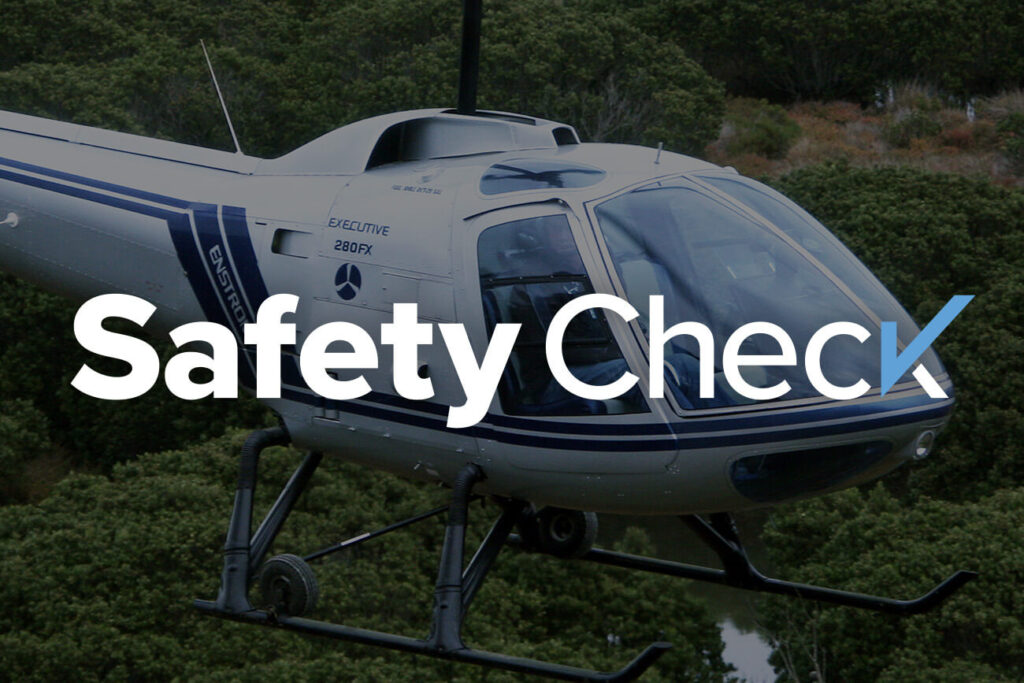Safety Check: Helicopter Traffic Pattern Etiquette

I recently pulled out an old Sweet Helicopters T-shirt with our old slogan printed across the back. It read, “No runway, no problem!” I wore it proudly, especially around my airplane-obsessed friends who would talk trash about rotorcraft. Not even the biggest helicopter critic can question the exceptional maneuverability of helicopters, which allows us helicopter pilots to land at non-airport locations. However, when our flight paths do take us to an airport, we do face an added challenge: avoiding the flow of fixed wing traffic.
I spoke to an air traffic controller in Elkhart, IN. Elkhart is a Class D airport with one full-time EMS operation and three private helicopters, so I figured this controller would be familiar with the unique procedures for directing helicopter traffic. I asked him what authority a controller has when issuing a landing clearance for a helicopter from its present position directly to a specific hangar or ramp.
He said, pilots typically make the initial call to the tower about 8 miles out. If they request to land somewhere other than a taxiway or runway at the airport, it is at his discretion whether to issue a landing clearance to a non-movement area. The controller must be able to visually see the helicopter and the requested landing site at the same time to confirm there won’t be any conflict before the aircraft has safely touched down.
Since a controller cannot control who drives a truck or tug onto a private ramp, most controllers hesitate to issue this type of landing clearance. Many times, the controller will add a disclaimer; “landing at the non-movement area will be at your own risk.”
However, what is more common for helicopters at controlled fields is to have the controller issue clearance to or from a nearby taxiway or runway where they do hold authority. This is when you can tell the difference between a tower operator who is familiar with directing helicopters and someone who is not. Sometimes, an operator will insist you land on the numbers, even if you’re the only aircraft within 10 miles of the airport.
But what about airports without a controller? I’m picturing busy, general aviation airports like Lake Elmo Airport (21D), located 12 miles east of downtown St. Paul, MN. A fellow Enstrom owner and longtime tenant of 21D tells me he competes for the same congested airspace as the flight school students. The CTAF frequency 122.80 is filled with nonstop chatter from students broadcasting position reports mixed in with pilots from nearby airports using the same frequency.
The airport has a voluntary Noise Abatement Plan (NAP) in place. My suggestion for the Enstrom owner was to communicate with the flight school and devise a plan where helicopters could fly a certain departure or arrival path (based on the current surface winds) and still abide by the voluntary NAP. Pilots may need to fly a non-standard or more direct pattern, utilizing different altitudes to avoid the small trainer aircraft.
When communicating with students in the traffic pattern, I like to use physical landmarks like water towers and bridges, which are objects someone could recognize instantly. Help the students visualize your path to the touchdown point. Here’s what that might sound like, “Copter one is over the water tower, two north inbound for the parallel taxiway to runway 32.”
I would also recommend slowing your helicopter to a speed where you have plenty of time to react if you spot a potential conflict. Choose a ground reference spot other than the active runway to initiate your approach, like a taxiway or windsock. Then, once in ground effect, hover taxi to your destination.
I am happy to report that the Enstrom owner has since taken my advice and held a meeting with the flight school’s Chief Pilot. In their discussion, they worked to standardize routes and make the skies safer for everyone. Also, the airport authority applied for a CTAF frequency change that will greatly reduce the chatter on 122.80. It’s great to see so many people working together to help promote safety!
No runway, no problem indeed.
Fly safe.

Randy is a dual rated Airline Transport Pilot with 13,000 flight hours in airplanes and helicopters. He has type ratings in the BE400 and CE500. Randy has been a rotorcraft Designated Pilot Examiner representing the Grand Rapids FSDO since 2014. Currently he works for Sweet Helicopters, a northern Indiana Part 135 air carrier operator and serves as the Airport Manager of the Goshen Municipal Airport.
About Enstrom Helicopter
From Rudy Enstrom’s early designs in 1943 to initial testing in a Michigan Quarry in 1957 to aircraft operating on six continents, Enstrom Helicopter Corporation has maintained a reputation for safety, value and performance. Based in Menominee, Michigan and proudly made in the United States, Enstrom has a rich history for design innovation. The goal is to provide helicopters to the customer’s exact specification and deliver support and maintenance worldwide.